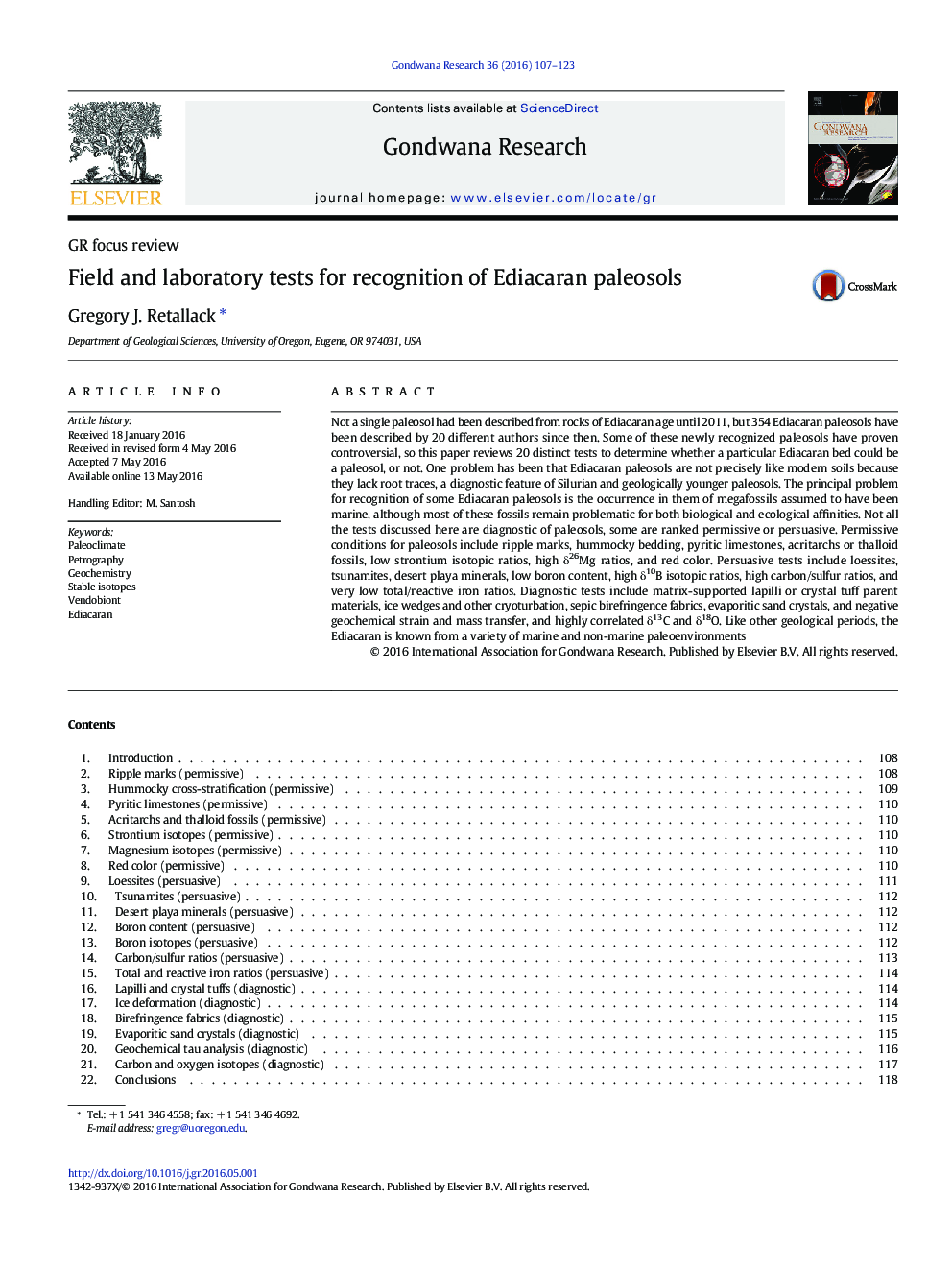| کد مقاله | کد نشریه | سال انتشار | مقاله انگلیسی | نسخه تمام متن |
|---|---|---|---|---|
| 4726622 | 1640135 | 2016 | 17 صفحه PDF | دانلود رایگان |
• Paleosols beneath Ediacaran fossils are evidence for life on land.
• Paleosols recognized by soil structure and horizons also have root-like filaments.
• Diagnostic are sepic fabrics, sand crystals, tau analysis, and covariant 13C and 18O.
Not a single paleosol had been described from rocks of Ediacaran age until 2011, but 354 Ediacaran paleosols have been described by 20 different authors since then. Some of these newly recognized paleosols have proven controversial, so this paper reviews 20 distinct tests to determine whether a particular Ediacaran bed could be a paleosol, or not. One problem has been that Ediacaran paleosols are not precisely like modern soils because they lack root traces, a diagnostic feature of Silurian and geologically younger paleosols. The principal problem for recognition of some Ediacaran paleosols is the occurrence in them of megafossils assumed to have been marine, although most of these fossils remain problematic for both biological and ecological affinities. Not all the tests discussed here are diagnostic of paleosols, some are ranked permissive or persuasive. Permissive conditions for paleosols include ripple marks, hummocky bedding, pyritic limestones, acritarchs or thalloid fossils, low strontium isotopic ratios, high δ26Mg ratios, and red color. Persuasive tests include loessites, tsunamites, desert playa minerals, low boron content, high δ10B isotopic ratios, high carbon/sulfur ratios, and very low total/reactive iron ratios. Diagnostic tests include matrix-supported lapilli or crystal tuff parent materials, ice wedges and other cryoturbation, sepic birefringence fabrics, evaporitic sand crystals, and negative geochemical strain and mass transfer, and highly correlated δ13C and δ18O. Like other geological periods, the Ediacaran is known from a variety of marine and non-marine paleoenvironments
Figure optionsDownload as PowerPoint slide
Journal: Gondwana Research - Volume 36, August 2016, Pages 107–123
